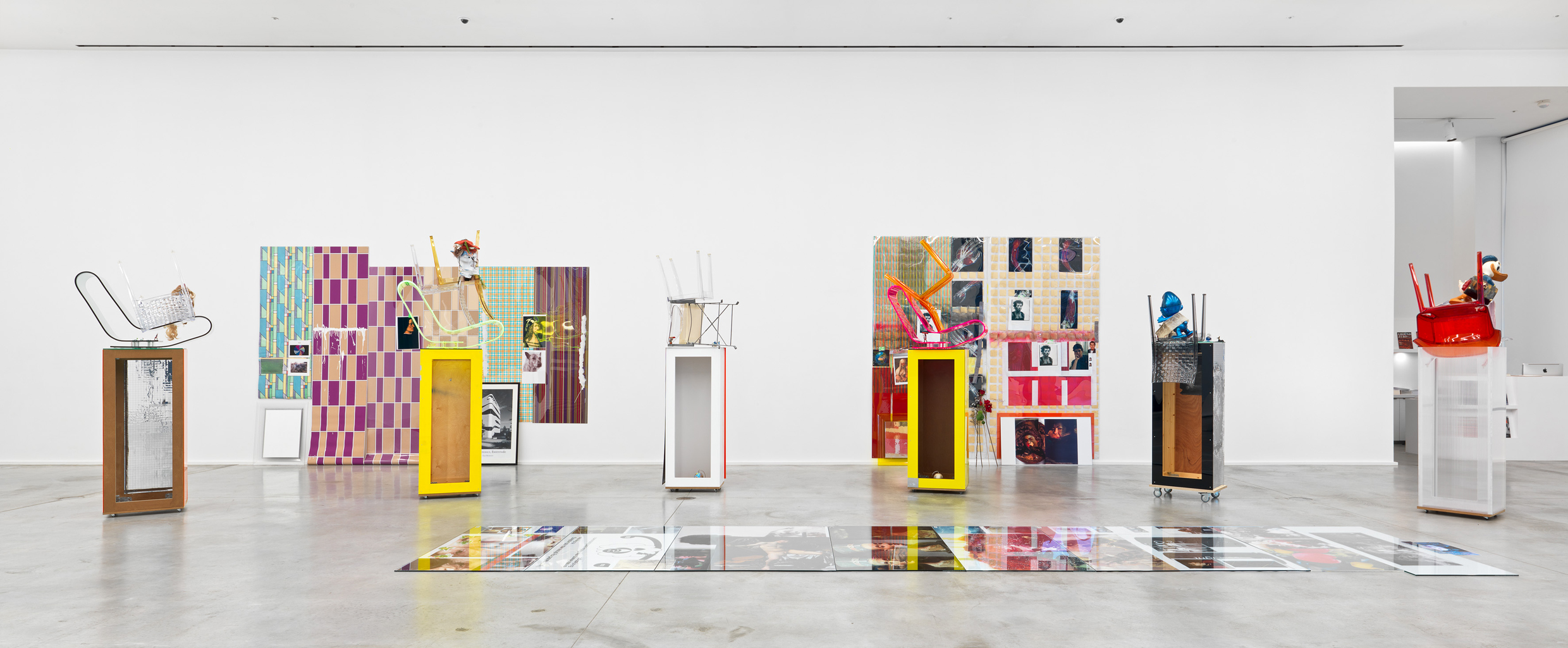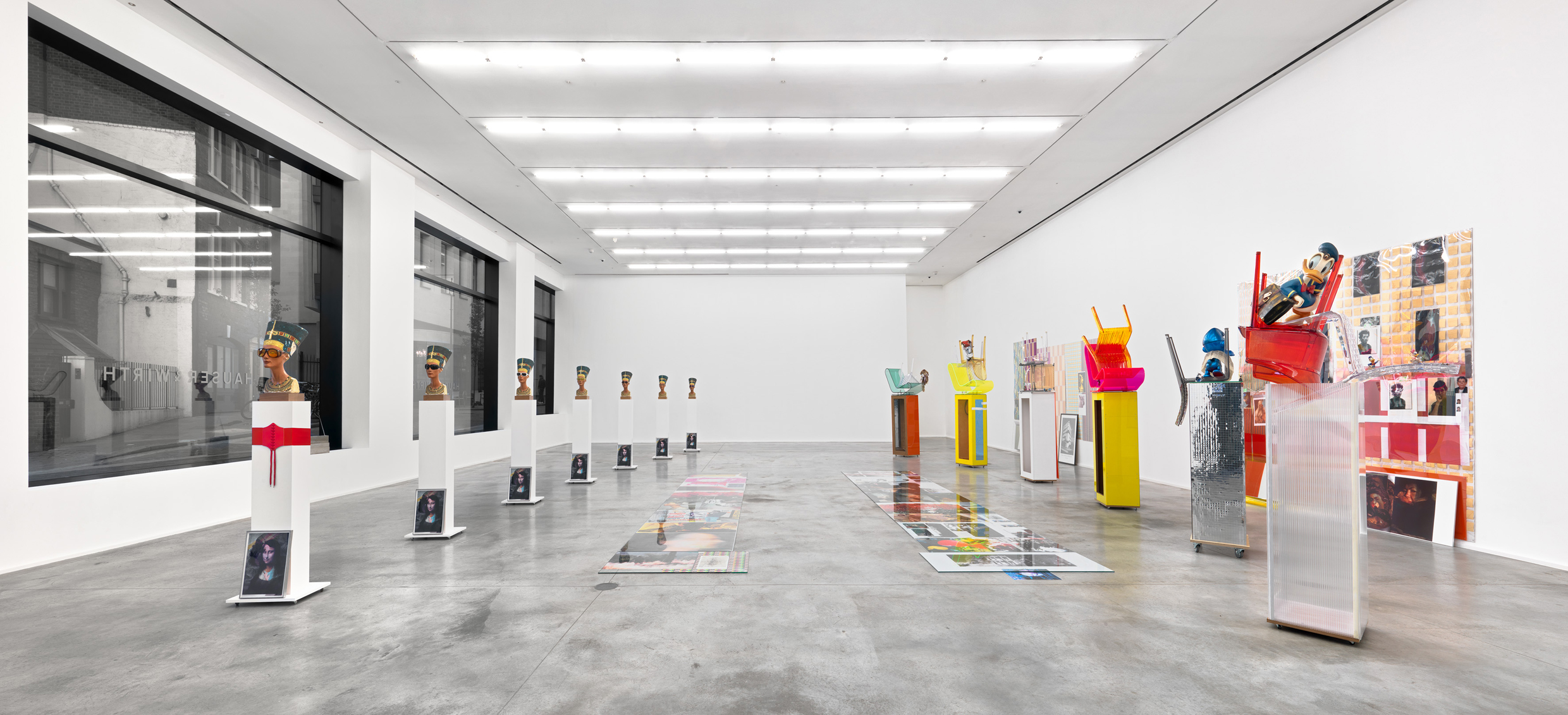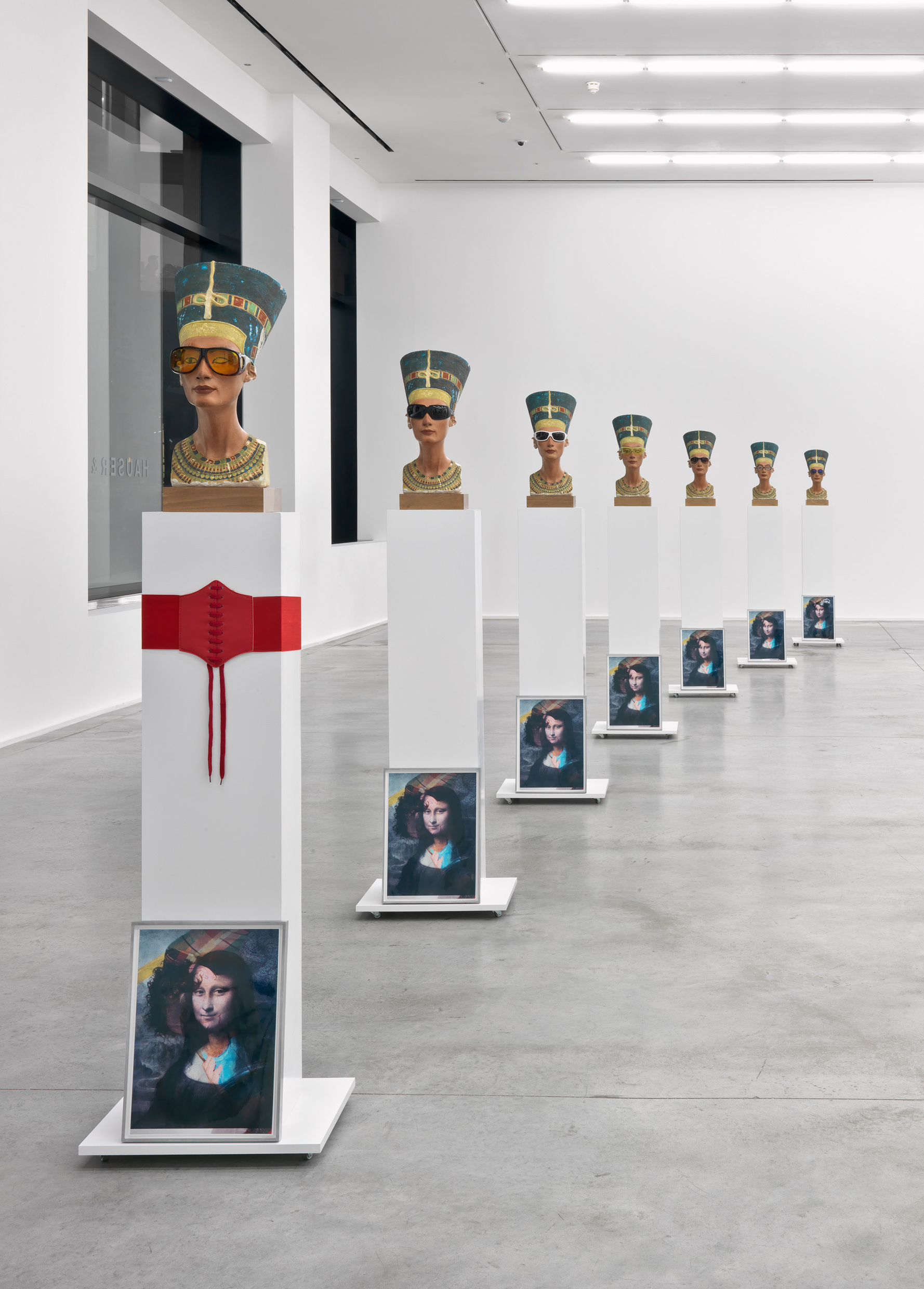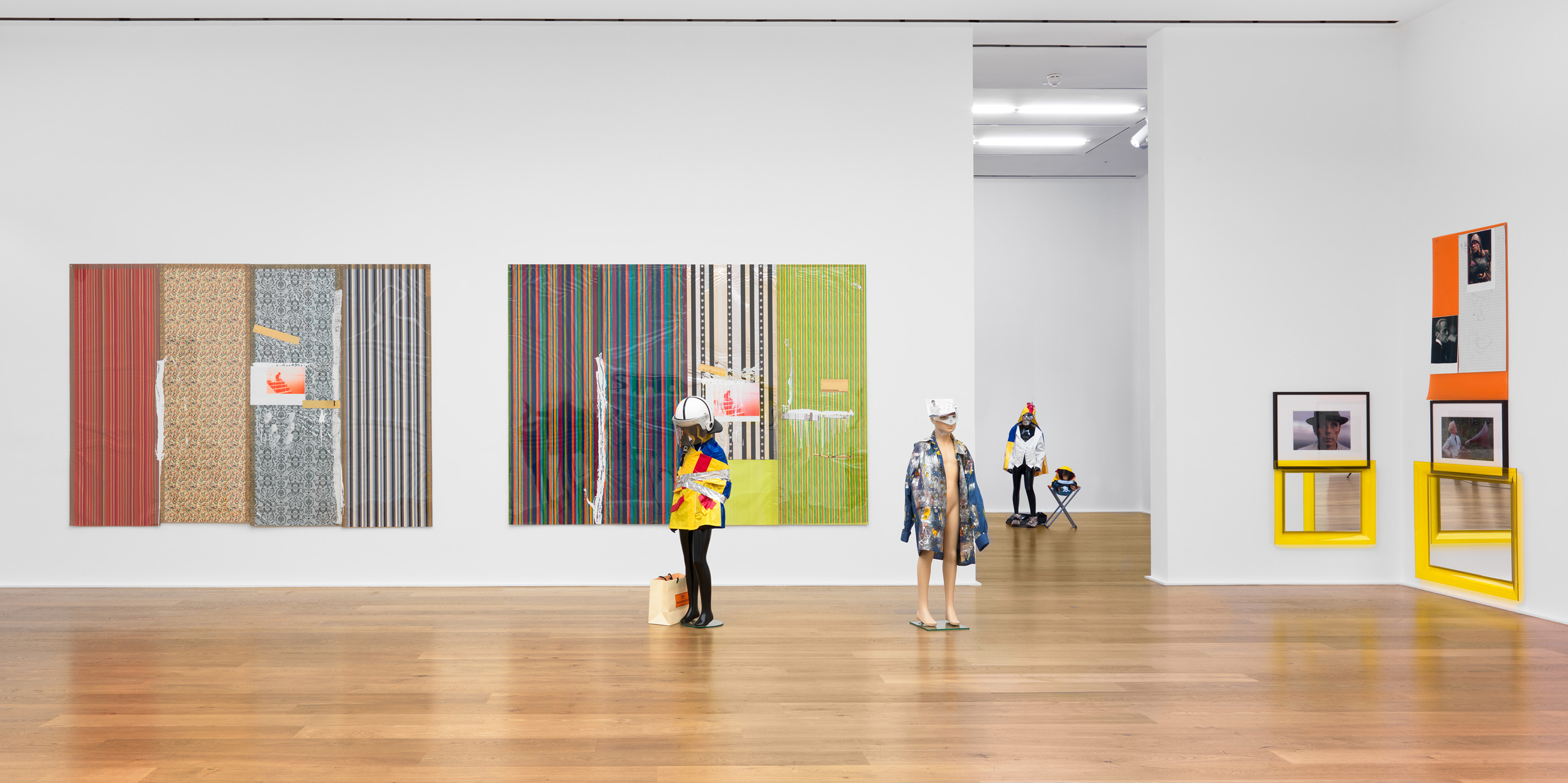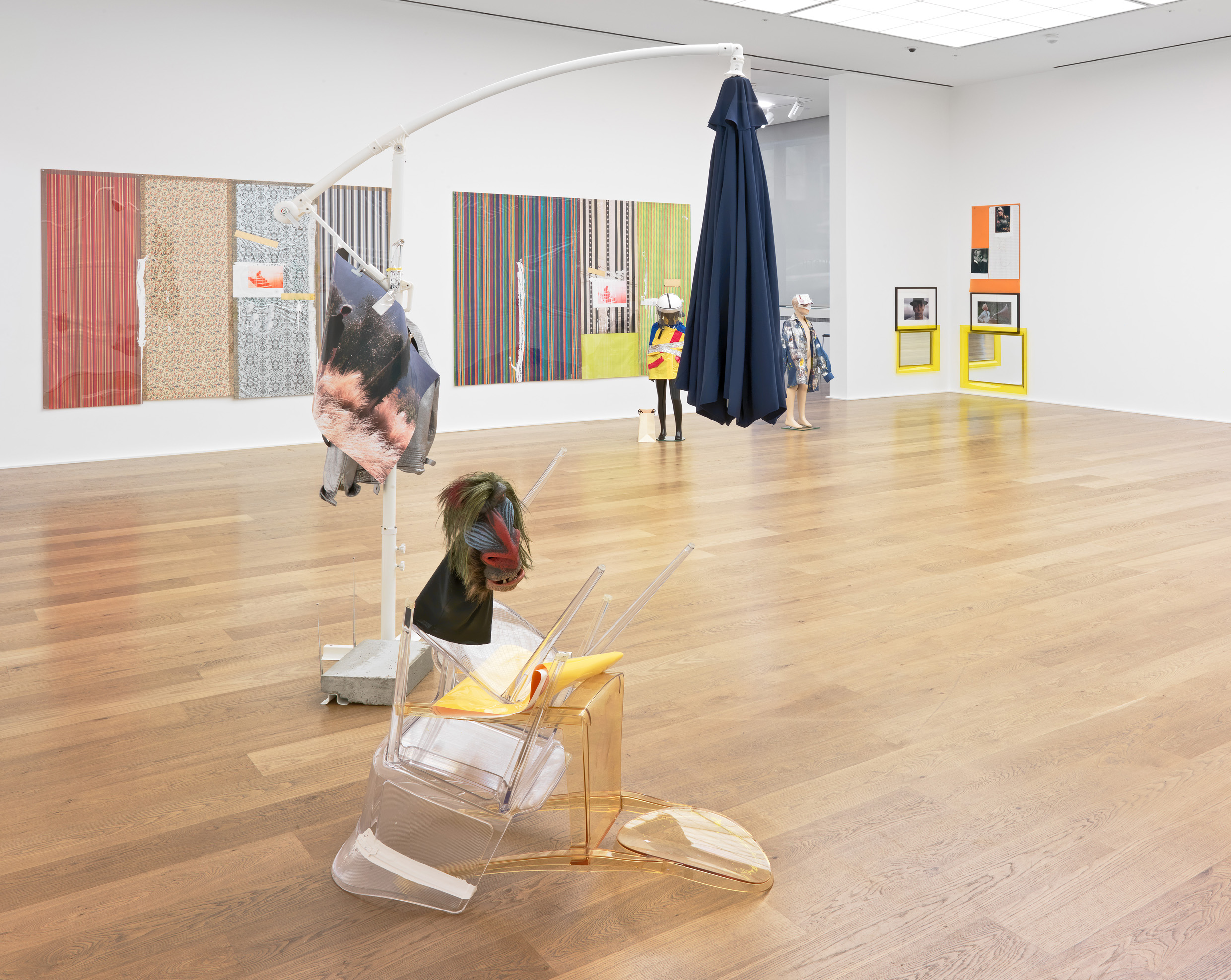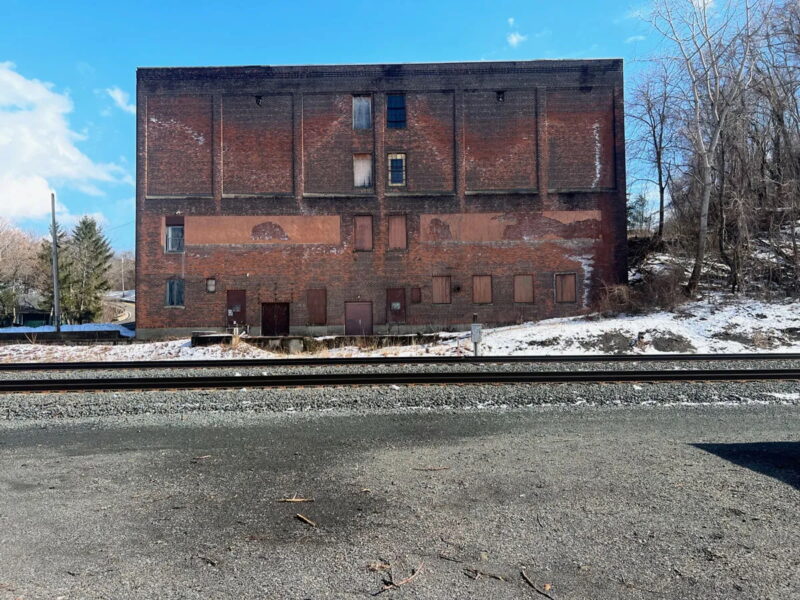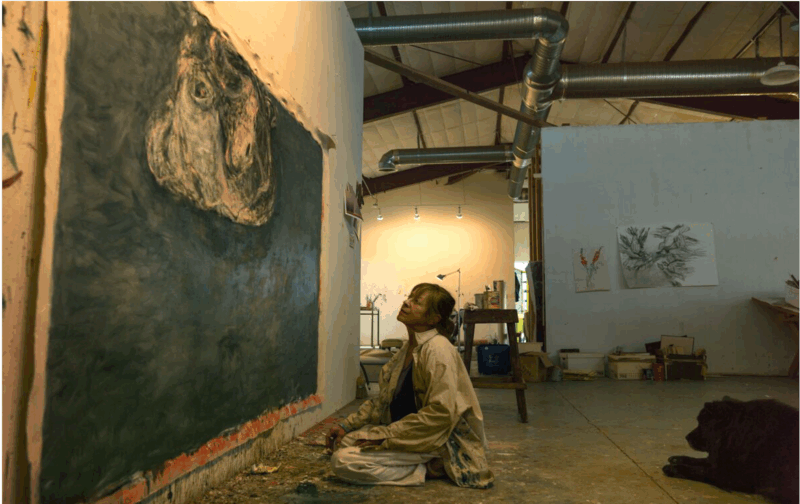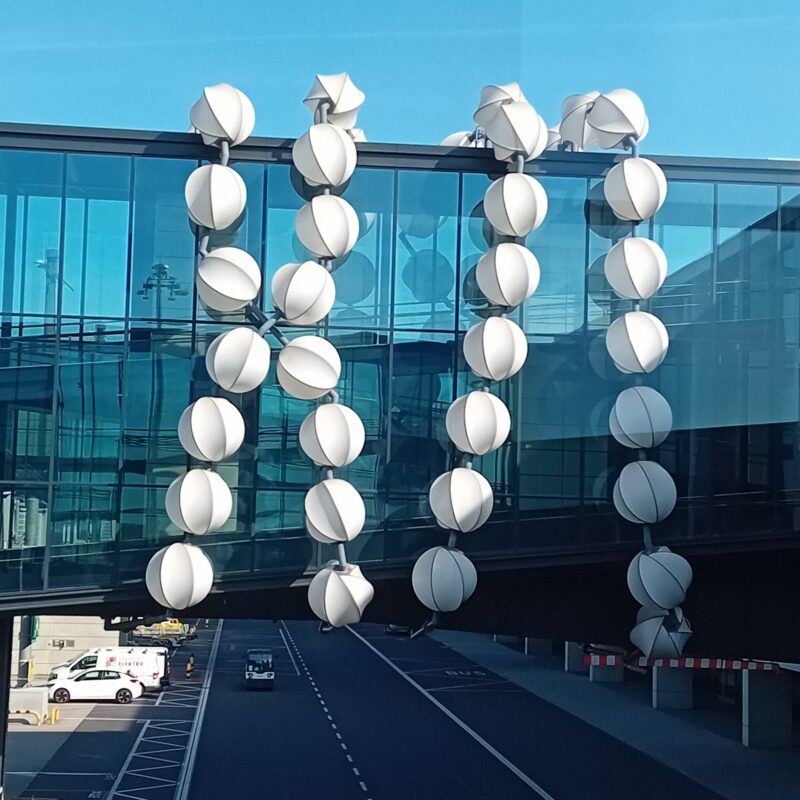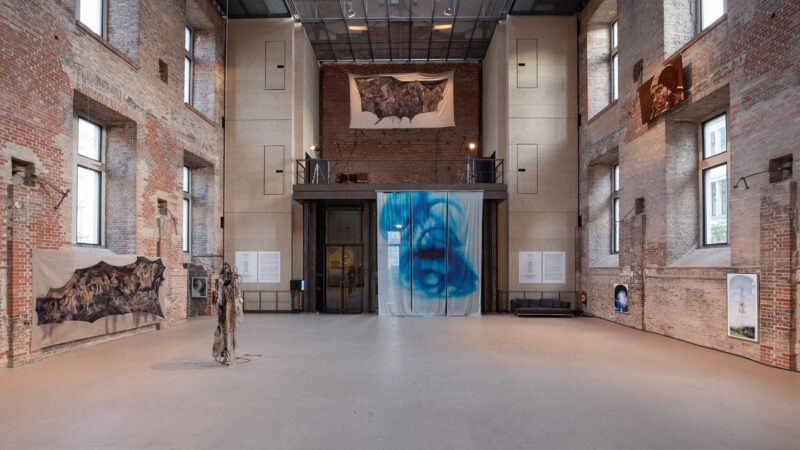We see a translation of three-dimensional form by the way that art, architecture, design and media affects the experience of city life at the opening by Isa Genzken at Hauser + Wirth.
‘I have always said that with any sculpture you have to be able to say, although this is not a ready-made, it could be one. That’s what a sculpture has to look like. It must have a certain relation to reality’
– Isa Genzken in conversation with Wolfgang Tillmans.
As you enter the first space (there is also the continuation next door) you allude the geometric way in which Genzken utilizes the available surface areas of the gallery walls and floor. I noticed the far and largest wall completely void of work and next to it, a mixed media collage hangs with an assembly of pedestals directly infront of it.
The exhibiton could be broken into segments that address issues of modernist architechture and city life with an evident admiration for highrise buildings that encapsulate her favourite city; New York but clearly inspired by the pastitiche of the sixties and the reoccurrence of repetition meets with modern designer chairs in an arrangement unsuitable for sitting but placed atop hollowed out pedestals.
An important observation is the juxtaposition of Genzken’s own face onto iconic images of feminine beauty where every pedestal is placed within an equally measured distance in a geometrical curved line which could be implied but is also multivalent.
It is here that Isa Genzken superimposes her face onto the reproductions of the Renaissance icon of feminine beauty, the Mona Lisa, whose famous portrait leans against the foot of each pedestal of the bust of Nefertiti, an ancient icon of feminine beauty and one of the most significant sculptures in history.
My focal point seemed to migrate towards the north facing wall however, where in which perpex plints are erected in a linear assembliage with designer chairs arranged purposefully in an unstable way with plastic ornaments, ceramic dolphins and toy figurines carefully placed in crevices.
It is through the collobarative use of everyday objects with modernist pieces that show a heavy nod towards architechure that are used to reflect an urban surrounding which Isa states she is fascinated by.
The fluidity of the seemingly nonsensical arrangement of plants and photographs alongside the whimsical array of empty shipping crates that have been manipulated by the artist convey the sense of the abandonment of order and power and the miminialst undertone is obliterated by the use of space.
The walls and floor that show photographs are covered in clear perplex (should you want to walk over them) with graffiti sprayed words, crossing out money in replacement of love whilst referencing over history and society in photographs of roses and self portraits.
Words by Laura Liliyana-Raffaella Cogoni
Isa Genzken
Installation view, ‘Isa Genzken’, Hauser + Wirth London, England, 2012
© Isa Genzken Courtesy the artist, Hauser & Wirth and Galerie Buchholz, Cologne
Photo: Alex Delfanne
Hauser + Wirth 15 November 2012 – 12 January 2012 23 Saville Row London W1S 2ET
